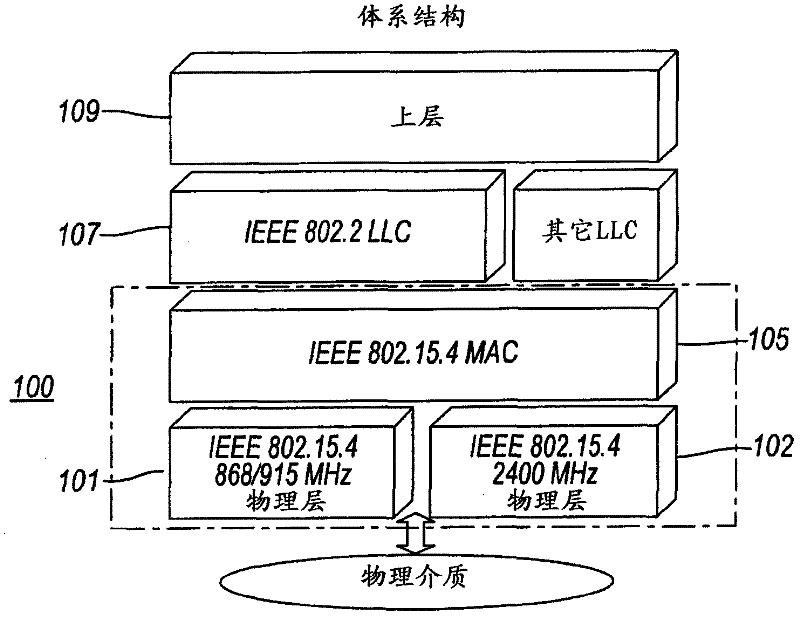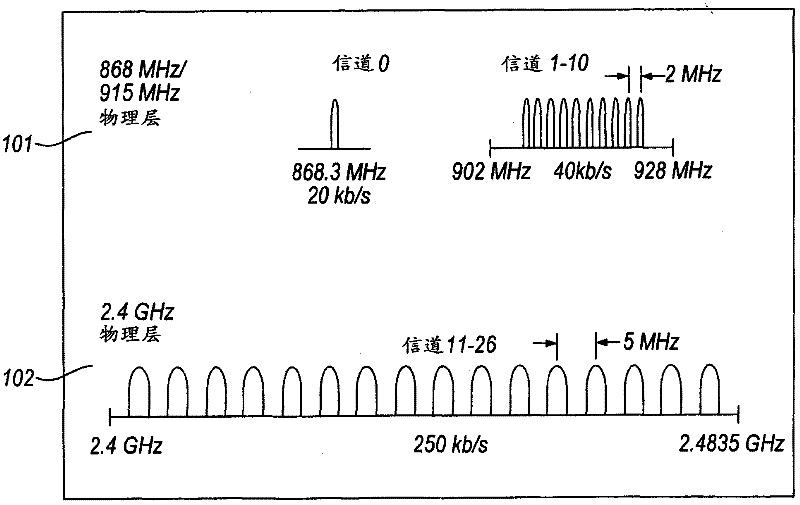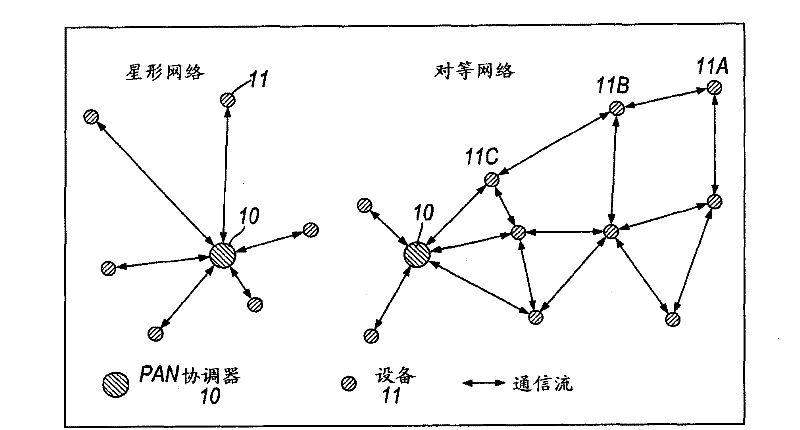Improvements to body area networks
A network and entity technology, applied in network topology, medical science, emergency connection processing, etc., can solve problems such as not considering emergency life-saving situations
- Summary
- Abstract
- Description
- Claims
- Application Information
AI Technical Summary
Problems solved by technology
Method used
Image
Examples
Embodiment Construction
[0054] Before describing embodiments of the invention, some background will be given on those parts of IEEE 802.15.4 that are intended to be related to the currently developing IEEE 802.15.6 standard and / or to body area networks including MBANs.
[0055] figure 1 The general structure of IEEE 802.15.4 WPAN according to the layered OSI model, referenced 100, is shown, in which the physical medium is accessed via a physical layer comprising radio transceivers and its low-level control. As shown, for the physical layer, there is figure 2 Two optional frequency bands 101, 102 are shown in . Low frequency band 101 provides a single 20 kb / s channel centered at 868.3 MHz, and / or ten channels of 40 kb / s each centered at 915 MHz. The high frequency band 102 provides 16 channels each at a frequency of 250 kb / s centered at 2.44 GHz. Which of these frequency bands is used depends on local regulatory requirements.
[0056] figure 1 The MAC (Media Access Control) sublayer, denoted by ...
PUM
 Login to View More
Login to View More Abstract
Description
Claims
Application Information
 Login to View More
Login to View More - R&D
- Intellectual Property
- Life Sciences
- Materials
- Tech Scout
- Unparalleled Data Quality
- Higher Quality Content
- 60% Fewer Hallucinations
Browse by: Latest US Patents, China's latest patents, Technical Efficacy Thesaurus, Application Domain, Technology Topic, Popular Technical Reports.
© 2025 PatSnap. All rights reserved.Legal|Privacy policy|Modern Slavery Act Transparency Statement|Sitemap|About US| Contact US: help@patsnap.com



